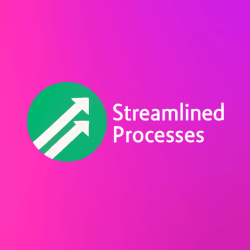For Subscription Billing And Revenue Platforms, see our main page here.
What Are Subscription Billing And Revenue Platforms?
Subscription Billing And Revenue Platforms are systems designed to automate recurring billing, track customer usage, and ensure accurate revenue recognition. They’re crucial for companies offering ongoing services or products on a subscription basis—think software-as-a-service (SaaS), digital media, or membership services.
These platforms eliminate the need for manual invoicing and streamline complex processes like prorated charges, upgrades, downgrades, cancellations, and renewals. As a result, businesses can reduce errors and improve cash flow.
Why Subscription Models Demand More Than Basic Invoicing
Traditional invoicing tools often fall short in a subscription business. That’s because subscriptions introduce variables—like plan changes, discounts, refunds, and trial periods—that simple billing systems aren’t built to handle. For example, mid-cycle upgrades can throw off revenue tracking if done manually. Therefore, automated platforms are not just helpful—they’re necessary.
Over time, revenue leaks (like missed charges or uncollected payments) add up and hurt your bottom line. Subscription Billing And Revenue Platforms prevent these losses while ensuring customers receive accurate, timely communications.
Top Benefits of Subscription Billing And Revenue Platforms
Investing in the right system allows you to scale operations with confidence and efficiency. Here’s how these platforms add value:
- Accuracy in Billing: Reduce human error with rule-based invoice generation.
- Automated Workflows: Handle onboarding, renewal, and cancellation flows seamlessly.
- Real-time Analytics: Access financial metrics like MRR, Churn Rate, and LTV instantly.
- Revenue Recognition: Stay compliant with ASC 606 or IFRS 15 regulatory standards.
- Customer Experience: Offer self-service portals and clear, transparent billing.
Most importantly, these features allow finance, sales, and customer support teams to collaborate better.
Case Study: SaaS Growth Powered by Automation
Let’s take an example of a mid-sized SaaS firm that transitioned from spreadsheets to a Subscription Billing And Revenue Platform. Before automation, their finance team spent 20+ hours a month reconciling invoices and manually updating revenue schedules. Errors led to delayed collections and inaccurate reports.
After implementing a cloud-based platform, their billing process became fully automated. Revenue reporting became real-time, freeing resources for strategic planning. Consequently, the company saved over $30,000 annually in operational costs, and their finance close cycle improved by five days.
How Industry Trends Shape Subscription Billing
The subscription economy has grown rapidly over the last decade. According to a report from Zuora, companies operating on subscription models grew five times faster than the S&P 500 between 2012 and 2020.
This growth has triggered rising demand for sophisticated billing tools. Today’s customers expect flexible pricing, instant upgrades, and no surprises. As a result, Subscription Billing And Revenue Platforms have introduced innovations such as:
- AI-driven churn prediction
- Usage-based pricing tied to metered consumption
- Multi-currency and tax automation
- Self-service invoice downloads and plan changes
These features aren’t just “nice-to-have”—they’re table stakes for modern digital businesses.
Common Challenges These Platforms Solve
Without automation, recurring revenue models come with several pain points. Subscription Billing And Revenue Platforms help overcome these by solving:
- Failed Payments: Automated dunning emails and retries reduce declined payments.
- Complex Revenue Rules: Handle multi-element arrangements, deferred revenue, and bundled products easily.
- Lack of Visibility: Dashboards that show forecasts, cash flow, and performance at a glance.
- Scaling Difficulties: Onboard thousands of customers with bulk operations and integrations.
For example, a streaming service can automatically manage free trials, pause/resume options, and peak demand without adding headcount.
Choosing the Right Subscription Billing Platform
Not all platforms are created equal. To choose the right fit, consider your growth stage, user base, and integrations. Questions to explore include:
- Does it integrate with your CRM (like Salesforce), your ERP, and your payment gateways?
- Can it manage variable pricing models: flat-rate, per-seat, per-use?
- What level of support and uptime guarantee does the vendor offer?
- Does it offer customizable reports and GAAP/IFRS compliance tools?
Smaller firms may prefer plug-and-play solutions, while enterprises often need customizable APIs and sandbox environments.
Manual vs Automated Revenue Recognition
A critical piece of finance compliance is revenue recognition. In manual systems, finance teams track when revenue “should” be recognized based on contract terms—a risky and tedious process.
Subscription Billing And Revenue Platforms apply logic and schedules for recognition, helping companies comply with global standards like ASC 606. For example, a company offering annual subscriptions can automatically recognize revenue monthly, even if customers pre-pay in full.
This reduces audit risk and speeds up month-end closing—benefits that matter at scale.
FAQ: Subscription Billing And Revenue Platforms
What types of businesses benefit most from these platforms?
These tools are ideal for SaaS providers, digital publishers, e-commerce subscriptions, and service-based firms offering recurring packages.
Can I start with a basic tool and scale up later?
Yes. Some platforms offer tiered pricing or modular features. Start small, then expand with advanced capabilities as your business grows.
Will I need a developer to integrate the platform?
It depends on the software. Some offer plug-in integrations with no code, while others require API work for custom functions.
Are these platforms secure and compliant?
Reputable providers meet SOC 2, PCI-DSS, and GDPR standards. Always verify security and compliance credentials before choosing a platform.
How does AI help in subscription billing?
AI tools assist by detecting churn risk, recommending pricing changes, and automating customer interactions like payment reminders and plan suggestions.
Final Thoughts on Subscription Billing Tools
As recurring revenue becomes the new standard, using manual systems can put businesses at a disadvantage. Subscription Billing And Revenue Platforms offer automation, visibility, and compliance that free teams from mundane tasks and enable growth-oriented decisions.
Companies that invest smartly in their billing infrastructure now will save time, money, and client frustration later. In short, they’ll be ready for scale—without chaos.
This article was created with the assistance of AI tools and reviewed by our team at Streamlined Processes LLC to ensure accuracy and relevance.
Follow us on Facebook here.

